Features of the MEMS switch "ADGM1004"
The ADGM1004 is a single-pole, four-throw (SP4T) MEMS switch from Analog Devices, Inc.
Compared to conventional mechanical relays, they are smaller, more energy efficient, and more durable.
Therefore, the MEMS switch ADGM1004 is the perfect device to solve the following mechanical relay problems.
- Mechanical relays are limited to millions of relay cycle life, so you want to reduce maintenance costs and time
- Mechanical relays take a long time to start up, as slow as milliseconds. Looking for ways to speed up boot
- Cascading multiple mechanical relays increases the board area, so I'm looking into ways to downsize it, and I also want to solve the assembly problem.
- Mechanical relays are difficult to use due to their narrow bandwidth
The ADGM1004 has the following significant features compared to conventional mechanical relays:
- 95% smaller in size
- 30x faster switching speed
- 10 times less power consumption
- 10x more reliable
This major feature is explained below.
1. "95% smaller" than traditional mechanical relays
The ADGM1004 measures just 5mm x 4mm x 1.45mm (LFCSP). The size is significantly smaller than general mechanical relays, so the board size can be significantly reduced.
Users can also arrange the ADGM1004 according to their specifications as shown in the diagram below. Therefore, it is suitable for applications such as ATE (automatic test equipment) that require multiple relay configurations.
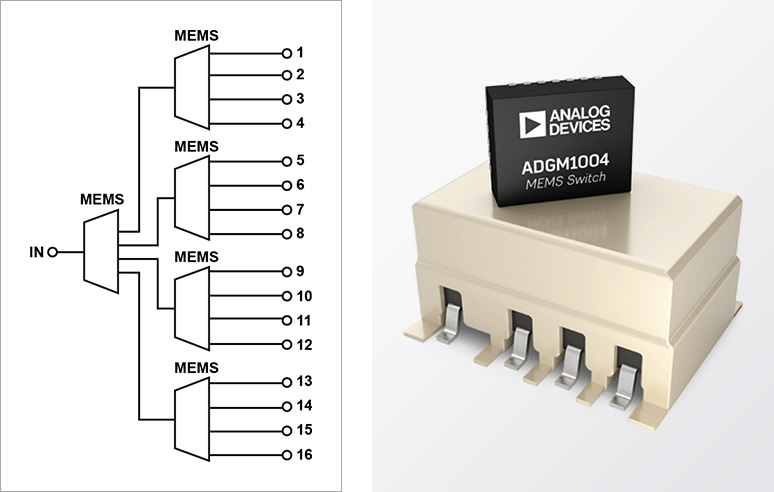
2. "30x faster" than traditional mechanical relays
The switching speed of a mechanical relay is approximately 1,000usec, but the switching speed of the ADGM1004 is approximately 30usec, making it 30 times faster.
The ADGM1004 also supports precision 0 Hz/dc performance and bandwidths up to 13 GHz.
Therefore, it can be used not only as a mechanical relay, but also for switching purposes in RF devices (antenna switching).
The figure below shows that there is little signal loss over a wide frequency range from 0Hz to 13GHz.
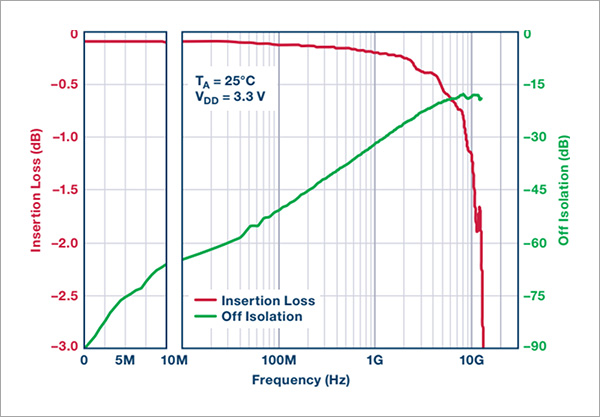
3. "1/10 power consumption" compared to conventional mechanical relays
The ADGM1004 operates at CMOS/LVTTL levels of 3.1 to 3.3V. The power consumption is 10mW, which is one-tenth the power consumption of general mechanical relays.
Therefore, it can greatly contribute to reducing the power consumption of the entire system.
4. "10x more reliable" than traditional mechanical relays
While mechanical relays switch mechanically, MEMS relays switch physically, making them more durable (reliable) and reliable.
The ADGM1004 has a lifetime of over 1 billion cycles. The standard switching time is 30μsec. Achieves 10 times longer product life compared to general mechanical relays.
Below is the life expectancy when hot switching a 2GHz, 10dBm RF signal. The average number of cycles to failure point is approximately 3.4 billion cycles.
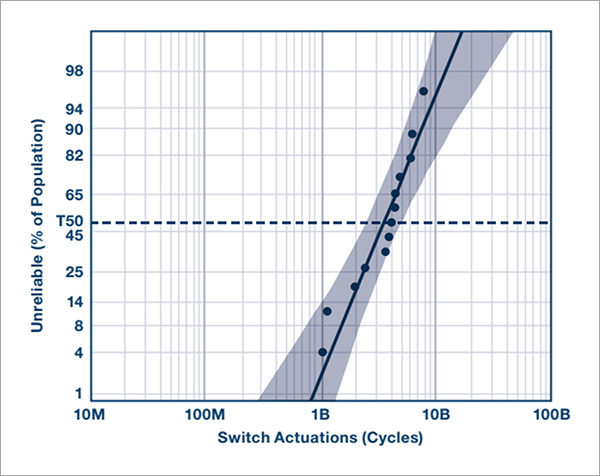
"EVAL-ADGM1004" evaluation board for immediate evaluation
The EVAL-ADGM1004 evaluation board is available for easy evaluation of the ADGM1004.
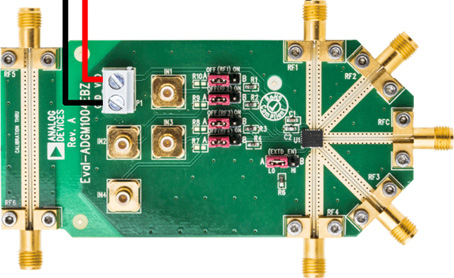
Using this board, you can easily start evaluating the ADGM1004 by following the steps below.
STEP1 Prepare the necessary equipment
The following three devices are required.
- EVAL-ADGM1004 evaluation board x 1
- 3.3V DC power supply
- 1 network analyzer
STEP2 Connect devices
Connect the equipment as shown below.
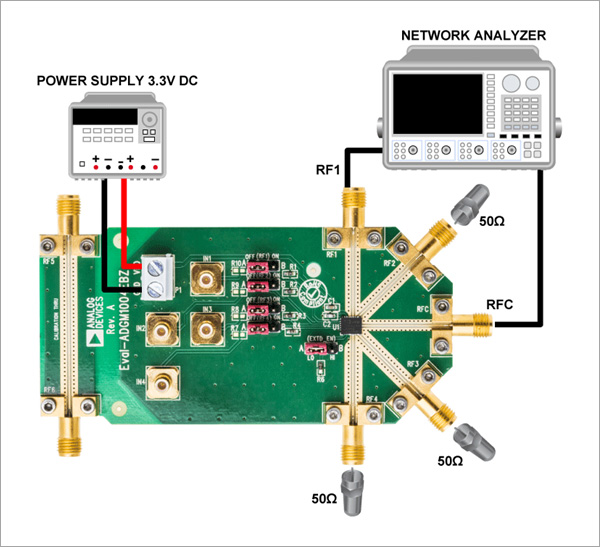
STEP3 Check operation
After selecting the desired channel according to the table below, you can evaluate its characteristics using a network analyzer.

Application example
- Mechanical relay replacement
- ATE (Automated Test Equipment): RF/Digital/Mixed Signal
- Bench test equipment: RF/digital/mixed signal
- RF test instrumentation
- Reconfigurable filter/attenuator
- High performance RF switch
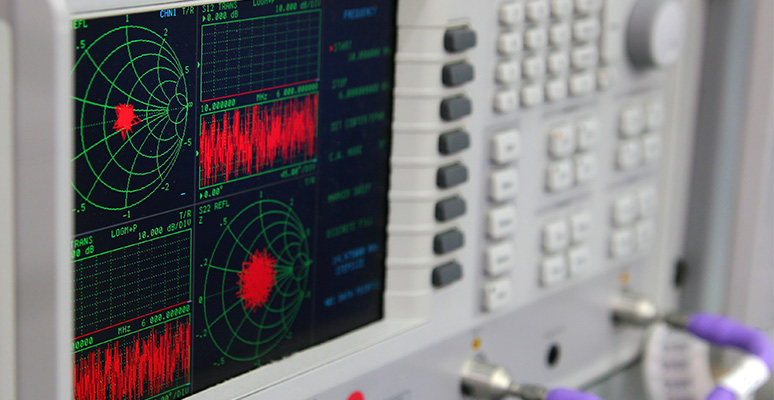
Product Summary
| Type name | ADGM1004 |
| specification |
|
Click here to purchase products
Click here for manufacturer site/other related links
Inquiry
If you have any questions regarding this article, please contact us below.
Analog Devices Manufacturer Information Top
If you want to return to Analog Devices Manufacturer Information Top, please click the button below.
